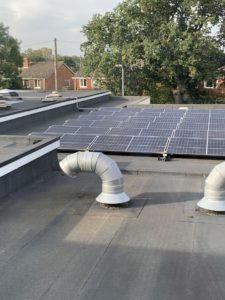
What is a daylighting calculation?
Daylighting Calculations ensure that both your development and neighbouring properties receive enough natural light.
How is it calculated?
I use three criteria to calculate light levels and maximise natural light:
Angle of sky – this is the angle between the centre of a window and the top of an obstruction.
Average daylight factor – this is the measure of overall daylight in a space.
The Vertical Sky Component (VSC) – this is a measure of the illumination on the outside of a vertical window when the sky is overcast.
Why do I need one?
We all know, intuitively, that a building with good levels of natural light feels better than one without. You’ll also turn the lights on less, meaning you’ll use less electricity, and in winter you’ll benefit from solar gain which will help keep rooms warm and pleasant.
What else you might want to know…
I’m a firm believer in the importance of natural light, and I’m always happy to explain how I go about measuring light levels and how you might be able to adapt your design to make the most of the sun’s light and warmth.




















